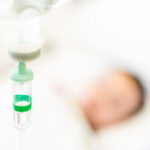Know the professionals for Children’s Dental Procedures

Following your discussion of sedation and anesthesia options with your child’s dental practitioner, ask who will administer the medications and monitor your child during the dental procedure. Below is a list of dental and medical professionals who may interact with your child during a dental procedure. Take the time to familiarize yourself with this list.
List of dental and medical professionals who may interact with children
General Dentist
College graduate studied dentistry and received their dental license through their state.
Pediatric Dentist
Completed all the training and licensing requirements as a general dentist, along with a pediatric dentistry residency.
Maxillofacial and Oral Surgeon
Graduates from dental school after completing a residency. Most maxillofacial and oral surgeons also hold a medical license and may be board-certified.
Anesthesiologist
Any doctor or dentist who has finished a residency in anesthesiology, which typically lasts 3-5 years.
Registered Nurse(RN)anesthetist
An RN with additional experience who completed a two-year program post-nursing school.
Dental hygienist
Earns an associate’s degree after completing two years of dental hygiene courses. In their state, they are licensed to give local anesthesia.
Dental assistant
Formal training is not necessary. State dental boards may register dental assistants. They are not qualified to be independent observers during general anesthesia or deep sedation.
Dental sedation assistant
The requirements vary by state, but the assistant can get a certificate that allows her or him to assist during anesthesia. However, dental assistants cannot administer rescue medications or sedation.
Related / How to Teach Your Child Brushing Teeth Habits.
Conclusion
There are also other various professional titles that are similar to the above such as toddler dentist, kids sedation dentist, and toddler sedation dentist.






